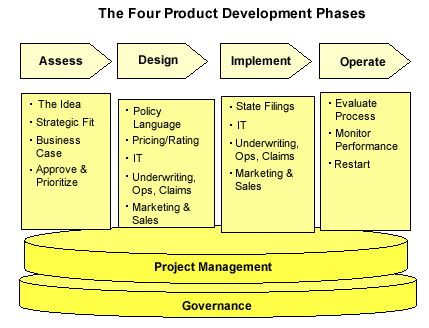Product Development Best Practices
Abstract
Celent identifies externalization as the key to best IT practice in product development across the insurance industry.
In a new report, , Celent looks at the increasingly important topic of product development in the insurance industry. According to the report, insurers need to develop product development plans with input from the field and should use technology that permits changes to be made externally from legacy programs.
The report differentiates among three different motivations for product development (strategic, competitive, and compliance) and three kinds of new products (true new, re-craft, and refresh). Celent also dissects the product development process into four phases (assess, design, implement, and operate) that rest on a foundation of project management and governance.

"Many insurers have inflexible legacy systems for pricing, underwriting, policy administration, billing, and claims. In the long run, insurers replace inflexible core systems傭ut product development is never done in the long run. It needs to be done now, or at least over the next couple of quarters," says Donald Light, senior analyst and author of the report.
"The general answer for insurers is to externalize. This means that an insurer has technology that allows it to develop products and supporting processes that do not require reprogramming legacy systems," he adds.
The 26-page report contains six figures and three tables.
A table of contents is available online.

